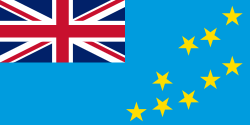External links
- Map of Nui showing Meang Archived 2011-08-06 at the Wayback Machine
7°11′50″S177°8′52″E / 7.19722°S 177.14778°E / -7.19722; 177.14778
| Islands | ||
|---|---|---|
| Atolls | ||
| Islets of Funafuti | ||
| Islets of Nanumea | ||
| Islets of Nui | ||
| Islets of Nukufetau | ||
| Islets of Vaitupu | ||
